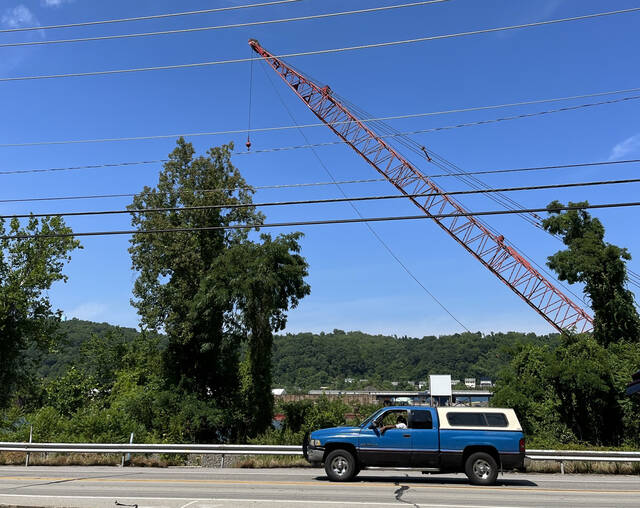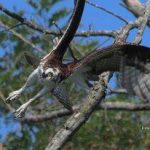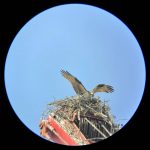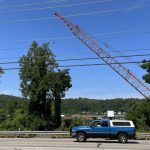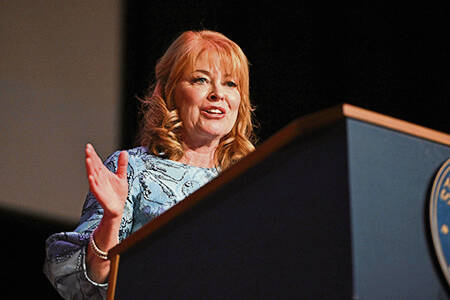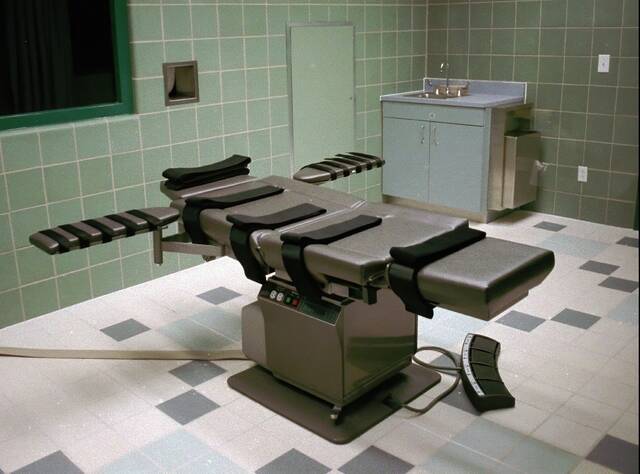Tarentum resident Jim Bonner, executive director of the local Audubon Society, has heard many bird stories.
Over the years, he has fielded countless inquiries from the public to the Audubon Society of Southwestern Pennsylvania’s headquarters at Beechwood Farms in Fox Chapel.
But there was something different about a recent call. A resident claimed a pair of bald eagles were nesting on a crane along the Monongahela River near Charleroi in Washington County.
“The woman was very certain and described how she pulled over and pulled out her binoculars,” Bonner said. “But when she described where it was at, I said an eagle was highly unlikely but it could be an osprey.”
Bald eagles build nests tucked away in trees while ospreys tend to erect nests in open spaces, he said. Both are expert fishermen. Ospreys hover, then punch and plunge into the water talons first, while bald eagles skim the surface to pluck out a fish and keep flying, he said.
Both birds were endangered when populations plummeted decades ago because of the pesticide DDT, habitat destruction and water pollution. The Pennsylvania Game Commission reintroduced both birds of prey and released ospreys in Moraine State Park in Butler County.
No longer endangered, bald eagle and osprey populations continue to climb, according to Sean Murphy, state ornithologist with the Pennsylvania Game Commission.
Bonner took a break from July 4 holiday weekend commitments to travel to Charleroi, which isn’t too far from where he grew up in Glassport and also is along the Monongahela River.
He easily found the aerie.
There was no missing a nest the size of a dining room table atop a crane with parent birds, larger than the typical hawk, sporting the telltale dark brown and white patterns. Two young birds were in the nest.
“The site looks industrial with boats and barges and a scrapyard.
“This is still a working river,” Bonner said.
The crane is inoperable. It sits in a giant construction terminal along the Monongahela River owned by Trumbull Corp. and Brayman Construction Corp., said Ed McGavitt, marine coordinator and captain for the companies. The site is busy with the construction and transport of construction pieces for the expansion of Locks and Dam No. 4 in Charleroi.
McGavitt and other workers have been watching the ospreys nest on the crane for three years. They had no intention of moving the crane.
“The birds have become kind of like celebrities in the yard,” he said.
It’s a noisy place with tow boats loading materials, high lifts running, welding, hammering and banging.
“The ospreys couldn’t care less,” McGavitt said.
The birds strategically add nesting material to the crane’s laced boom where the nest sits at the right angle.
“They do it all with no formal engineering,” McGavitt said.
Bonner is not surprised by the birds’ skill and nest site choice.
“This is a structure these birds like. They were opportunistic enough to find a good spot,” he said.
It’s not dissimilar to nesting on the Gulf Tower in Pittsburgh or Pitt’s Cathedral of Learning, Bonner said.
“For them, there’s no difference between that crane or a platform with a pole or a really big tree.”
Admiring the genius of the birds’ nesting choice, Bonner added, “You won’t see a raccoon or any predators climbing up there.”
Space is available for wildlife and food in these former and currently used industrial sites. Bald eagles and peregrine falcons are nesting downriver, with a family of eagles thriving for the past three years on U.S. Steel’s Irvin Works property in West Mifflin. Other osprey nests have popped up along the river as well.
Bonner, who knows his way around the Mon Valley, is intrigued by its environmental comeback, including hosting nests of formerly endangered predatory birds such as the bald eagle, osprey and peregrine falcon.
All in less than pristine environments — or at least seemingly so.
While visiting the osprey nest site, Bonner saw deer, a groundhog and heard reports of the formerly endangered peregrine falcon in the area.
“The river is extremely clean now,” said McGavitt, who has been working on the river for more than 40 years.
His barge and tug boat hit two to three fish daily.
“We have a lot of good fish, beaver, turtles and more,” McGavitt said. “We have seen a turtle with about a 3-foot diameter shell. “He was a big boy.”
Currently, plans are to let the osprey continue living on the idled crane, he said.




